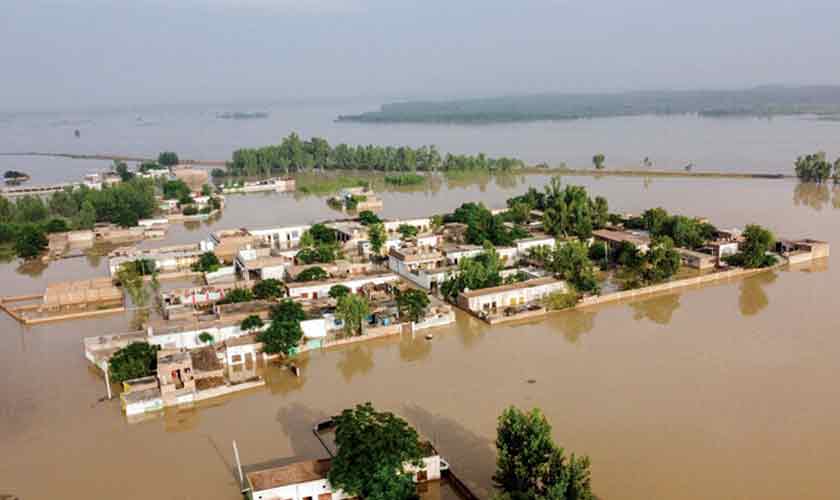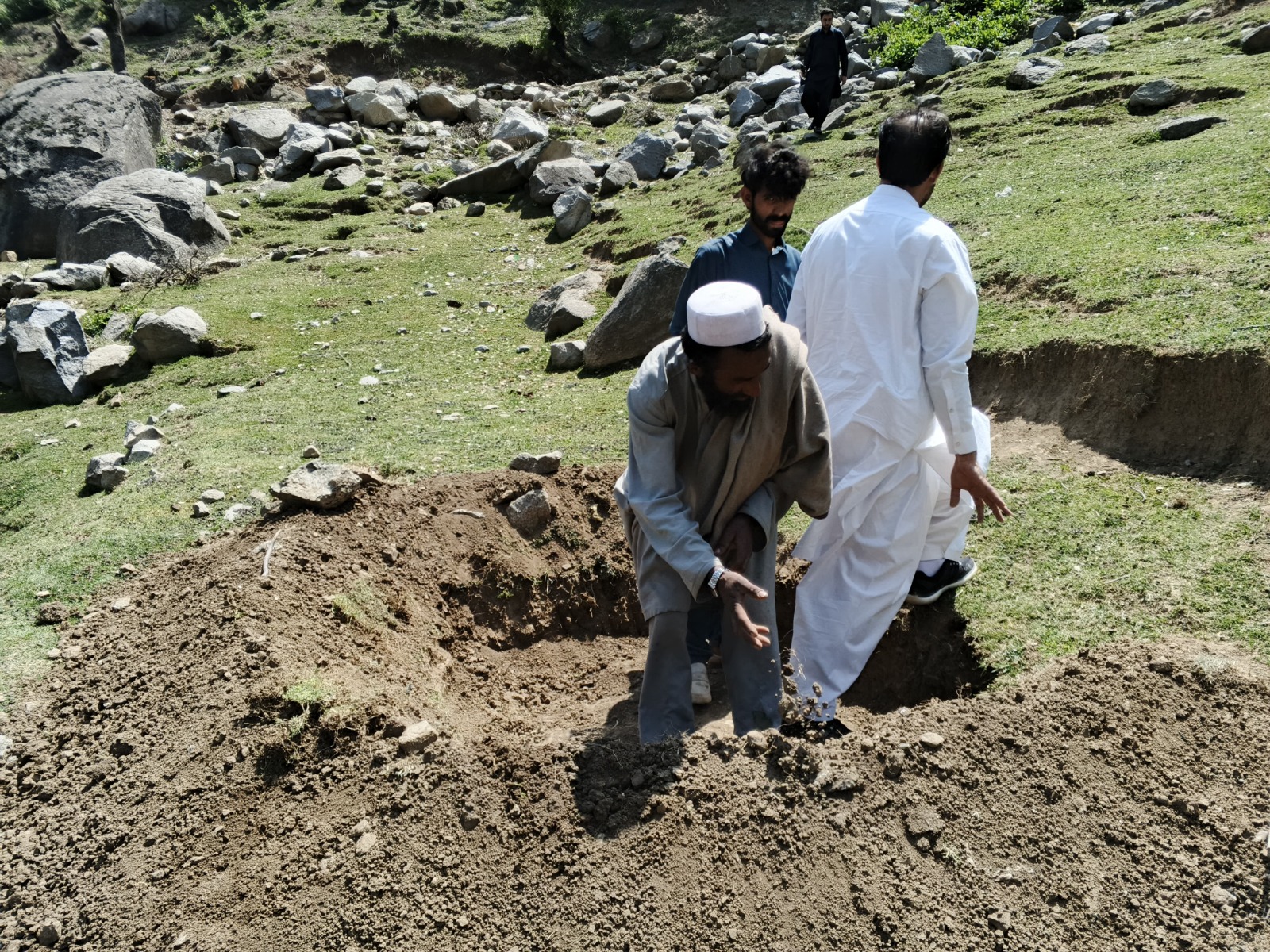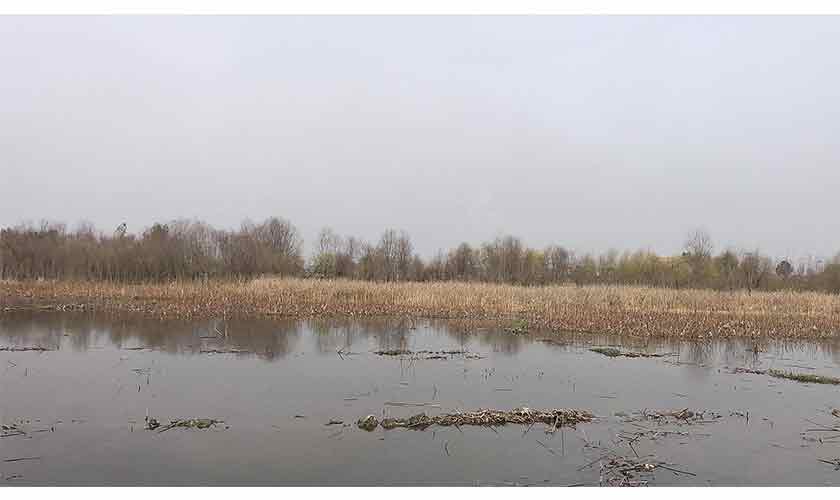Khyber Pakhtunkhwa faces increased climate-change events. How far will policy measures go to mitigate and adapt?
By Muhammad Daud Khan
The mountainous regions of Khyber Pakhtunkhwa are grappling with severe agricultural challenges due to the persistent impacts of climate change. In recent years, signs have become increasingly evident: declining crop yields, deteriorating fruit orchards and growing concerns over food security across the province.
Each year, the province faces climate change-induced disruptions, people are displaced, livelihoods are threatened and agricultural productivity continues to decline. The province is now teetering on the edge of a food security crisis, with risks escalating further.
Chief Minister Ali Amin Khan Gandapur took a notable step last week by directing relevant departments to develop a comprehensive policy aimed at revitalising agriculture in the province’s highlands.
According to official documents obtained by The News on Sunday, the Chief Minister’s Secretariat has tasked the Agriculture Department with drafting the final version of the Mountain Agriculture Policy Khyber Pakhtunkhwa within 45 days.
The preliminary documents include a concept paper that identifies thematic focus areas, outlines key recommendations and proposes strategic interventions. These include targeted attention to soil quality, land use, climate conditions and environmental factors unique to mountainous regions.
The directive also underscores the importance of value chain development and enhanced market access. It calls for the promotion of modern agricultural technologies, research initiatives and extension services in remote areas, while also acknowledging the role of women and community mobilisation in strengthening rural economies.
Key policy goals include improving food security, creating employment opportunities and ensuring effective resource management. The plan proposes the creation of a Mountain Agriculture Development Board, community seed banks and initiatives for water and soil conservation.
Though the framework is being hailed as a promising roadmap for mountain agriculture, it currently exists only on paper.
Prof Dr Mohammad Nafees from the Environmental Sciences Department at the University of Peshawar has long observed Khyber Pakhtunkhwa’s environmental affairs. Speaking to The News on Sunday, he says Pakistan is continuing its efforts to counter the threats of climate change through both mitigation and adaptation.
“Fortunately, these efforts have moved beyond mere talk,” he says. “A national climate change policy is in place, with action plans developed at both federal and provincial levels to support implementation.”
Currently, Pakistan is working on its National Adaptation Plan, a framework designed to respond to climate vulnerabilities. Initially drafted in the wake of the catastrophic 2022 floods, the plan has yet to be fully operationalised due to technical challenges and institutional fragmentation.
“One of the key obstacles is the complex web of stakeholders at both national and provincial levels,” says Dr Nafees. “With climate change affecting environment, agriculture, energy, industry and disaster management, it’s difficult to clearly define roles and responsibilities.”
Among the primary stakeholders, the Environmental Protection Department and the Agriculture Department stand out. The former is central to emission reduction and environmental regulation. The latter, on the frontlines of climate adaptation, is especially critical, given that agriculture contributes 20-25 percent to Pakistan’s GDP.
Pakistan is the third most polluted country globally. Controlling emissions is crucial to any effective climate strategy. This places the Environment Department at the core of national mitigation efforts.
Renewable energy also features prominently in the country’s strategy. Hydropower falls under the Water and Power Development Authority but solar energy projects are overseen by the Alternative Energy Development Board. The Industries Department is drawn in due to pollution from factories and manufacturing units.
Dr Nafees also highlights the role of the Forestry Department, which contributes to both mitigation (via carbon sinks) and adaptation (through ecosystem restoration). Agencies like the Pakistan Meteorological Department and the National Disaster Management Authority provide crucial climate data and disaster response services, respectively.
“The overlapping mandates and fragmented institutional structures make it hard to implement a unified climate policy,” says Dr Nafees. “Sometimes, the solution lies with one department, but the responsibility falls under another. With each province experiencing different climate impacts, the complexity only deepens.”
For Pakistan to effectively tackle the climate crisis, Dr Nafees emphasises the need for a clear, coordinated legal and departmental framework, one that aligns the roles of all stakeholders and streamlines decision-making across sectors and provinces.
“Until that happens, Pakistan’s roadmap to climate resilience will remain fragmented across ministries and policy documents, waiting for meaningful execution.”
Barrister Dr Saif, advisor to the chief minister on information and public relations, says Khyber Pakhtunkhwa is among the regions most vulnerable to climate change globally. It is facing increasing hydro-meteorological disasters such as floods, droughts, GLOF events and heatwaves. He says that Khyber Pakhtunkhwa’s Provincial Disaster Management Authority, as the lead agency, is proactively addressing these challenges by coordinating structural and non-structural mitigation efforts with all line departments.
“To strengthen disaster preparedness and climate resilience, the PDMA has launched several critical initiatives. Seven telemetry stations have been installed across key rivers and nullahs, including Kalpani (Mardan), Swat, Panjkora (Dir), Budni (Peshawar) and Kabul River, providing early warning systems for vulnerable communities. SMS alerts are also used to disseminate timely warnings,” he says.
Dr Saif says the PDMA is promoting community-based disaster risk management for mass awareness and has developed SOPs for effective responses. Warehouses, he says, have been established in Jalozai and six vulnerable districts—Kohistan, Chitral, Torghar, Shangla, Battagram, and Hangu—for rapid delivery of non-food items during emergencies.
“Ongoing efforts include the formulation of a Provincial Disaster Risk Reduction Policy and Risk Management Plan, the installation of a Hydro-Meteorological Guidance System (very early warning), and a Multi-Hazard Vulnerability Risk Assessment across the province. Plans are also under way to establish additional warehouses in remote districts under the ADP to enhance logistical capacity.”
“These efforts reflect the province’s strategic approach to minimising disaster risks and building long-term resilience,” Dr Saif adds.
The writer is a multimedia producer and co-founder of Climate Watch. He tweets @daudpasaney



